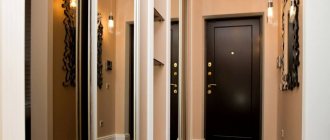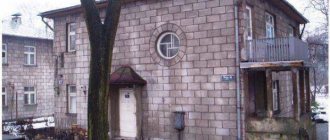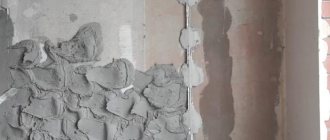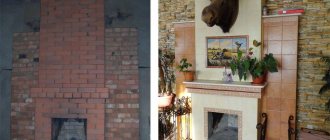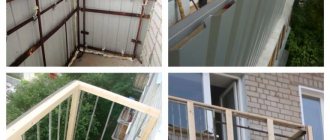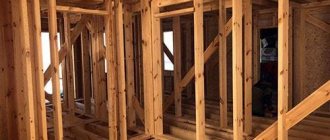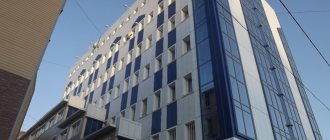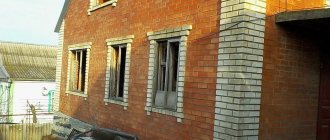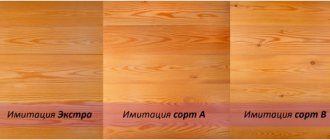Many of those who decide to get a bathhouse on a country site opt for foam blocks. This is a lightweight and cheap material that you can handle even without being a professional. And yet, its features require careful attention to detail: if you do not want to freeze, it is better not to neglect the recommendation to use special glue instead of a cement mixture, and priming and waterproofing cannot be excluded from the list of finishing works, because this is fraught with destruction of the foam blocks.
The reasons for these requirements lie in the physical properties - the cement mixture has different thermal insulation indicators, and for glue they are close to foam concrete, while water is easily absorbed by its porous structure, which is why walls made of this material need protection. By the way, in addition to waterproofing, thermal insulation will not hurt.
The last two points relate to finishing work. Let's take a closer look at how to decorate a bathhouse made of foam blocks inside and out. Let's start with the interior work. This article about foam block baths, their finishing, photos will help you too.
The process of finishing interior walls with clapboard
Many people perform cladding using wooden lining.
The advantages of wood are obvious to everyone - it is durable and beautiful, but when using it, all the nuances must be taken into account. For example, lining made from coniferous trees cannot be used where temperatures are always high, that is, in steam rooms, since when it is heated, sticky resins are released. They are dangerous to the human respiratory system. Quite often mold forms in bathhouses. Antiseptics of various types help to cope with this, so it is better not to decorate the washing room with clapboard. Cheap pine paneling is used in dressing rooms. Deciduous trees are needed in the steam room. The most reliable and durable oak lining. However, currently aspen lining is most often used.
By all accounts, aspen is the best type of finish. The advantages are aroma, environmental friendliness, and health benefits, because when heated, some wood species release phytoncides into the environment.
Move the paneling into the bathhouse itself - it should absorb excess moisture. Before installing the finishing, complete the wiring of all communications.
Next, you need to make a wooden sheathing (for this it is better to use special screws intended only for working with foam blocks) and then everything is covered with a special solution that prevents the formation of mold.
Next, the insulation is installed. The vapor barrier material is attached with a stapler to the sheathing previously prepared for this.
Next, the lining is secured either with nails or secret clamps. Claypers are used at the finishing and decorating stage.
Installation of beacons
After all of the above, you should measure the parameters of the walls and begin manufacturing a wooden frame or beacons based on the measurements taken. The guide beacons must be fixed at a distance of about 0.6 - 0.9 meters from each other, vertically. This is usually done with self-tapping screws.
Beacons must be level. To do this, cut plywood and timber are installed underneath them. Check whether the guides in the sashes are installed correctly using twine or rope. First, a rope is pulled above the floor level, then the same is done in the middle of the wall and under the ceiling. The lace should not be deflected by the beacons in the other direction and no gaps should form between the sheathing and the lace.
About insulation and vapor barrier
The most important and basic thing for a steam room is that it must retain heat very well. At any time of the year, there must be the required temperature inside the steam room
If the vapor barrier is not completed, the steam leaves the room through the walls, after which condensation forms between the walls and the finish. As a result, the wood begins to rot and mold forms on it.
A professional installation of insulation and vapor barrier will keep the bathhouse structure in its original form and protect it from destruction.
Also, in a comfortable bathhouse with the thickest walls possible, it is necessary to provide ventilation.
When the human body lacks air, a feeling of dizziness, nausea and weakness appears, this is especially dangerous for people with the initial stage of diseases of the cardiovascular system.
Ventilation is intended for the following purposes.
- Redistribution of air masses in the steam room;
- Formation of fresh air and its influx. This is especially necessary when using an electric heater as a heating element, since it burns oxygen.
Sheathing material
This process can be done with your own hands without the involvement of specialists.
In order to calculate the required amount of lining, you need:
- Let's calculate a bathhouse measuring 4x4 meters, with a ceiling height of 3 meters. We will trim and sheathe all the walls and ceiling;
- Let's assume that the bathhouse has two compartments - a 3x4 meter steam room and a 1x4 meter dressing room;
- Next, you need to calculate the area of the steam room lining. Calculation of ceiling area: 3x4=12 m2. Calculation of wall area No. 1: 4x4 = 16 m2. Calculation of the area of a short wall: 3x3=9 m2;
- We calculate the total area of all compartments: 12 (ceiling) +16 (wall No. 1) +9 (wall No. 2) +3 (wall No. 3) +3 (wall No. 4) = 42 m2;
- Next, we perform calculations for the dressing room. Ceiling area: 1x4=4 m2. Area of two walls No. 1: 4x3=12 m2. 12x2=24 m2. Wall area No. 2: 1x3 = 3 m2. 3x2=6 m2. Total area: 4+24+6=34 m2;
- The total finishing area is 42+34=76 square meters;
- Then we count the window and door openings, their area, then add about 15-20 percent to trim the material.
Why were gas silicate blocks chosen?
When I just started construction, many neighbors in the dacha community asked me a question about why I chose gas silicate blocks. Somehow everyone got used to either wood or brick. And my arguments are:
- Quick installation. Gas silicate blocks are larger in size than bricks, so the construction of walls from them is much faster.
- High thermal insulation. Gas silicate belongs to cellular concrete, that is, it has many air cells inside. They play the role of heat insulators. Therefore, a bathhouse made of gas silicate blocks, in comparison with a brick one, warms up faster and retains heat longer. In terms of thermal insulation qualities, gas silicate is not inferior to wood.
- Fire resistance. Gas silicate blocks do not burn, unlike wooden structures.
- Impossibility of rotting.
- Low cost compared to brick, timber or logs.
In addition, I have good bricklaying skills, so I decided that I could handle gas silicate blocks.
I'll start in order.
Requirements for finishing material
Foam block belongs to the category of porous building materials. In its production, a gas-forming substance is used, due to which more bubbles appear inside the solidifying mixture.
Thanks to this, the walls have a high degree of vapor permeability. Natural air infiltration passing through the enclosing structures helps to establish a microclimate comfortable for living inside the home. The material “breathes”. That is, our main condition when choosing the finishing of a building should be the absence of obstacles to the escape of water vapor from the interior. In other words, the instructions tell us that if the finishing is improper, we retain water vapor, which begins to accumulate in the foam concrete material. As a result, we get the accumulation of moisture in the body of the block and its destruction.
Foam blocks themselves do not have high mechanical strength and can be damaged as a result of mechanical stress. In addition, they will absorb water, which will freeze at subzero temperatures and destroy the blocks.
Therefore, you need to choose finishing options for foam blocks taking into account the characteristics given in the table.
Let us indicate which finishing options for foam blocks are definitely not suitable:
- Ceramic tile;
- Concrete tiles;
- Plates made of foamed polymer;
- Conventional plaster with a mortar based on sand and cement;
- Paints that will form a film on the surface of the walls.
Preparation for construction
Based on all the indicators and our purchasing power, we chose aerated concrete blocks for the bathhouse, which have a thermal conductivity coefficient even lower than linden, with dimensions of 600x200x300 mm.
Size and design selection
We decided to build a small, inexpensive bathhouse for one family of three or four people. The height of the bath is usually determined by your capabilities, but traditionally the height from floor to ceiling should be 220 or 230 centimeters. Let's take the dimensions of the bathhouse as 5.5x5 meters. Let's draw an approximate drawing. You can visualize it on your computer.
Three-dimensional drawing of a future bathhouse in 3DMax
Selecting a location
If the area is small, then you don’t have much choice. But if it is big, then there is a chance to use all its advantages. A simple and cheap foundation can be limited to good solid soil and deep groundwater. Their close occurrence can be recognized even visually: where the midge curls in a column on the site, it is damp. According to SNiPs, a bathhouse should not be located close to a well (a bathhouse is considered a source of pollution), a house (to avoid fire), a toilet and a compost pit (to avoid washing away their contents). The nearest tree from the bathhouse should be at least 15 meters.
Drawing of choosing a location for a bathhouse, taking into account all the buildings and trees on the site and the neighbor’s fence
Coordination of the design of the future bathhouse with administrative authorities
Without approval of the project before the start of construction, an already built bathhouse can be demolished due to any complaints from neighbors, and you will lose the labor and money invested. The project should include the following items:
- A plan (floor plan, even if you have one floor), created according to all drawing rules with specifications, sections and explication.
- Approximate estimate for materials.
- Planned type of foundation with drawing.
- Consent of the closest neighbors for construction.
An example of a bathhouse design sheet for approval
Calculation of the number of blocks for construction
It is difficult to accurately calculate the amount of material for a block bath with such rough guidance as we can give in one single article. We can only give an approximate picture. You can find calculators online to calculate the number of blocks. We'll use any. Doors and windows will be taken as the arithmetic average size. We will lay the walls in half a block with glue. Taking into account the accepted project, dimensions, weight and density of the blocks, we fill out the table.
Table for calculating the number of blocks and glue
We get the result.
Calculation result
Insulation and waterproofing of buildings
Waterproofing the steam room with foil.
- The best option for insulating the steam compartment from moisture is a special aluminum foil. It covers the walls from the inside, before they are faced.
- In other rooms - washing room, dressing room, rest room, the walls are protected with vapor-proof membrane films.
- In winter, a strong temperature difference between the rooms of the bathhouse and the street leads to moisture condensation inside the walls. When frozen, it damages blocks. Therefore, it is necessary to insulate the walls of the building on both sides. To do this, you can use different types of foam or mineral wool.
The photo shows thermal insulation made of mineral wool.
External cladding
Ventilated facade.
In order for a building to look aesthetically pleasing from the outside, it must be lined with some kind of material.
- The best exterior finish for aerated concrete is a ventilated façade, which is of the hinged type. It will allow excess moisture from the walls to evaporate into the atmosphere.
- The optimal coverings of this type are basement and wall siding made of vinyl, as well as decorative slabs mounted on the sheathing.
- Please note that for sufficient air circulation, the coating must be 5 cm away from the wall.
Advantages of using aerated concrete as a material in construction
Aerated concrete blocks are pliable when processed manually and are resistant to fire. Aerated concrete differs from other materials in its low cost and availability; it is chosen to build various objects. And the lightness of the material helps in the construction of various structures. Light weight makes it possible to speed up the process. The wall can be of almost any shape, even the most complex project can be implemented; aerated concrete is easy to cut.
Thanks to the finishing from the inside, the building made of blocks for washing and resting looks aesthetically pleasing, lasts a long time, without harming the environment. Aerated concrete is durable and does not rot. From the point of view of fire hazard, it is more reliable than wooden structures, but the appearance may be different.
Lining
It is best to decorate the interior walls of a bathhouse with clapboard as it looks good, smells good and does not form condensation.
Finishing the steam room of a bathhouse photo of one of the clapboard cladding options
Before you start finishing the steam room with clapboard, you need to treat this clapboard with an antiseptic and a moisture-repellent solution, and you cannot cover it with stain or varnish, since high temperature and moisture will destroy them and, as a result, harmful and dangerous substances will be released that have a negative effect on the human body. The quality of clapboard finishing for baths and steam rooms depends on the quality of the finishing material, in this case the quality of the clapboard. Therefore, the interior decoration of the steam room should be done only with clapboard that is well dried and free of knots and nicks.
Finishing the bathhouse with a slab on the ceiling instead of lathing
It is best to finish a bathhouse with eurolining made from hardwood because such wood has lower thermal conductivity than other species and therefore less heat will reach the walls through them. There are different types of hardwood, for example, lining made by:
- From birch it charges a person with energy.
- Aspen makes a very durable lining if the wood is properly dried; this wood absorbs negative energy and helps get rid of headaches. Aspen is very moisture resistant and almost does not crack, and also almost does not rot and has antiseptic properties. It is best to make bath floors from aspen.
- It is better not to make it from birch as it dries out a lot due to its loose structure.
- It is also not recommended to make it from larch since it contains a lot of resin, and when heated, the resin will flow.
- Linden will make a beautiful white steam room, and since it is the lowest heat-conducting wood, it is best to finish the bathhouse with linden on the ceiling and walls located near the stove. Even in a humid environment, linden does not lose its properties and when heated it begins to emit a pleasant aroma, so it is recommended to decorate steam rooms with linden.
The finishing of both wooden and brick baths is done almost the same way. First of all, the floor is laid. The floors in the bathhouse should be made of wooden boards with a slight slope towards the drain. Since the temperature at floor level almost never rises above 35 degrees, almost any wood pre-treated with an antiseptic solution can be used for the floor.
Floors made of ceramic tiles need to be covered
Also, the floors in the bathhouse can be tiled, but on such a floor you can easily slip and therefore, for safety reasons, you must put a wooden flooring on the floor. When the floor is ready, begin finishing the walls. If the walls are smooth, then roll insulation with foil is attached to the wall, and when finishing the bathhouse with foil is finished, it is covered with clapboard. If the walls are not level, then a sheathing is first attached to the walls at a distance of 70 cm from each other, into which the insulation and waterproofing layer are laid, and then the lining is stuffed over the sheathing.
Waterproofing films Ondutis
To waterproof the floor in a bathhouse made of aerated concrete blocks, a vapor barrier film Ondutis R100 or Ondutis D (RV) is used. Laying the material is carried out similarly to the processes described above
In this case, much attention is paid to waterproofing the joints, since the panels must be connected without the slightest gaps
Ondutis waterproofing films are modern materials of the highest quality. Several types of films are suitable for waterproofing work. Let's list some of them:
- Ondutis R100 is an environmentally friendly material widely used in waterproofing in aerated concrete baths. Polymer fabric has excellent performance characteristics: high tensile strength, non-decomposition. The material prevents the insulation from getting wet and causing mold;
- Ondutis D (RV) is a new generation universal film characterized by good performance characteristics. It protects structures from the harmful effects of condensation and serves for a long period of time. The gray material has high tensile strength and environmental friendliness;
- Ondutis R Thermo is a two-layer material coated with a protective coating. The heat-reflecting vapor barrier film prevents moisture from entering the enclosing structures.
Waterproofing a bathhouse made of aerated concrete, equipped with Ondutis films, is the ideal solution. The materials improve insulation performance and effectively protect walls, floors and ceilings from high humidity.
Bathroom flooring
In a bathhouse, the floors are usually made of concrete or wood, which in turn can be leaky or non-leaky.
They require effective ventilation (holes in the foundation) so that the wood does not rot, otherwise a musty, stale smell, mold and condensation on the walls are inevitable.
A self-leveling concrete floor is a kind of screed that contains, in addition to cement and sand, filler in the form of crushed stone, gravel, marble chips, etc.
It is difficult to achieve the uniformity of such a solution manually, so a regular sand-cement mortar is laid using a concrete vibrator. Such ready-made mixtures for floor screed are available in the retail chain.
Ceramic tiles provide good protection for a concrete floor from moisture, but in the washing area it is advisable to use ribbed tiles with a non-slip surface, on top of which wooden grates are usually placed on top of the concrete floor.
Beams for a wooden floor that does not leak are 100x100 mm or larger bars. First, subfloor boards are nailed to the lower sides of the beams, and insulation, for example, stone wool, is placed on top of them in the gap between two layers of waterproofing film. Most often, tongue and groove boards made of pine or linden with a thickness of 40 mm are used as floor covering.
Thickness and layering of walls
The bathhouse is not a living space and is heated only periodically, so there is no need to build massive walls in it. Excessive thickness only increases warm-up time, forcing you to waste more fuel. It’s not for nothing that standard designs provide for a wall thickness of 300 mm - it is the most optimal.
Taking blocks of greater width (375 mm) or laying a wall one and a half blocks long makes sense only in the northern regions. In a relatively warm climate zone, walls can be made no more than 200 mm, for which the same block with dimensions 60*20*30 cm can simply be laid on its edge.
A lot here also depends on the size of the building - a small bathhouse definitely doesn’t need thick walls. Moreover, the facade is also insulated.
A little about masonry
Work begins with preparing the foundation surface, which is most often uneven. When installing gas blocks, manufacturers recommend using special adhesive mixtures. This is more profitable, since glue, although more expensive, is consumed much more economically.
However, the first row of blocks is placed on a regular solution of cement and sand, and the foundation is also leveled with it. A screed is made, waterproofing is laid on top of it with mastic (to cut off the possibility of capillary suction of moisture), and then the bed for the first row of masonry is laid out.
Laying the first row of waterproofing
- All other rows are mounted with glue - with it the thickness of the seams is thinner, and accordingly, there are practically no cold bridges. Like any building mixture, dry glue is mixed with water, mixed, and swells for 5-10 minutes. Then it is mixed again and goes to work.
- Laying begins from the highest point of the foundation, determined by the water level. In the corners of the wall, ordering slats are placed, a mooring cord is pulled between them, which will make it possible to control the position of the blocks and the thickness of the seams.
- There should be no differences between the upper planes of neighboring blocks, as this can cause cracks to appear. They are sanded - like the block halves, which need to be sawn to complete the laying of the row. The next row begins to be laid on the side where the extension is installed - this will ensure the necessary displacement of the vertical seams.
About reinforcement
If the length of the bathhouse walls does not exceed 6 meters, there is no need to reinforce them in every 4th row.
It is enough that you provide reinforcement:
- On the sides of the openings on top, where the lintels will rest.
- In the penultimate row of masonry in front of the window opening.
- Make an armored belt in the area of the ceiling or support of the roof rafters.
Reinforcement of a number of gas blocks with rods
The masonry can be reinforced either with rod reinforcement: on walls with a thickness of 250 mm or more - in two rows with a diameter of 8-10 mm (on thinner ones, one rod with a diameter of 12 mm is taken). The reinforcement is placed in pre-cut grooves and embedded in glue. You can also use punched tape, steel or basalt mesh to strengthen the masonry.
Interior decoration
After laying the walls, they arrange the ceiling and try to quickly install the roof - to protect the construction site from precipitation. Then they begin to form the floor and only then begin to line the walls. First from the inside.
Traditionally, the walls of the washing compartment of the bathhouse are covered with wooden lining - a profiled board with a tongue and groove on one side and a groove on the other. It is mounted on a wooden sheathing, between the belts of which they lay, for example, foam plastic, covered with sheet foil on top.
Cladding made of clapboard in the steam room
- We have already mentioned the ease of use of materials such as Penofol and Tepofol. They have a great advantage over all known insulation materials, since with the same thermal conductivity they have a vapor permeability coefficient of only 0.001 mg/m*h*Pa. We can say the figure is zero.
- That is, such a material best protects against the penetration of vapors into the wall, while at the same time being a thermal insulator. Thanks to the foil layer, which must face the inside of the room during installation, it perfectly reflects heat.
- A vapor-waterproofing membrane is first installed under the polyethylene foam, making overlaps between the sheets, leading them to the foundation and to the ceiling, and fastening them with double-sided tape. Next, Penofol sheets are mounted end-to-end, gluing the seams with aluminum tape.
- Mechanical fastenings are made with dowels only along the top line, since the sheathing bars installed at the next stage will perfectly fix the rolled insulation. If the lining is mounted vertically, the bars are placed in a horizontal position - and vice versa.
Interior decoration of a bathhouse made of foam blocks
Building a bathhouse is still half the trouble; the interior finishing of the steam room, washing compartment, and installation of a sauna heater stove still lie ahead.
Today, on the construction market there are a huge variety of different types of finishing materials, both for home and for bathhouses. Basically, for interior decoration, insulation, a vapor barrier in the form of foil film, or foil itself, and lining are used. To decorate the interior, namely the steam room, it is best to use linden lining for this purpose, but the price of this product can sometimes be very high. If the entire bathhouse is decorated with linden lining, it will turn golden))).
But the craftsmen came up with a little trick: the steam room is small and you will have to fork out for it and decorate it with linden, but the washing compartment can be decorated with a pine car, which costs several times less. Moreover, the temperature in this room is more gentle than in the steam room. And you don’t have to worry that the lining will begin to release resin.
Some people also do the following: in the steam room, they line it with pine clapboard at a level of a meter from the floor, and continue above with linden. It turns out the following: below the level of 1 meter, the concentration of fresh air and a gentle temperature prevail, which has a beneficial effect on the condition of the pine lining, namely, it does not emit resin.
The author decided to decorate his steam room with linden lining, since he is doing it for himself, for the soul, and saving in this case does not make sense. He will do all the interior finishing work himself.
Materials:
bars, lining, tiles, boards, bricks, metal sauna stove, heater stones, tile adhesive. Tools:
hacksaw, hammer, trowel, mallet, level, ruler, tape measure.
And so the first thing he does is sew bars onto the walls.
Receive a selection of new homemade products by email. No spam, only useful ideas!
*By filling out the form you agree to the processing of personal data
A couple of tips for insulation
As I already wrote above, not only the floor in the steam room should be insulated, but also all other rooms of the bathhouse. But here you should carefully consider the choice of material used. For example, only materials with a closed cell structure (foam plastic, extruded polystyrene foam, etc.) are suitable for steam rooms and sinks. Due to the peculiarities of the microclimate created in these rooms, the use of mineral insulation is not recommended!
But the rest room or dressing room can be safely insulated with mineral wool and even construction felt (no one has canceled polystyrene foam either). In these rooms, the humidity is not so high, and therefore these materials will not be subject to strong influence and will help create a cozy atmosphere.
Well, that’s probably all I wanted to share with you in this article. I hope it will be useful to some readers. See you again, friends. And warm floors to you... Bye!
About insulation and vapor barrier
The most important and basic thing for a steam room is that it should retain heat very well
At any time of the year, there must be the required temperature inside the steam room. If the vapor barrier is not completed, the steam leaves the room through the walls, after which condensation forms between the walls and the finish. As a result, the wood begins to rot and mold forms on it.
A professionally completed installation of insulation and vapor barrier will keep the bathhouse structure in its original form and protect it from destruction.
Also, in a comfortable bathhouse with the thickest walls possible, it is necessary to provide ventilation.
When the human body lacks air, a feeling of dizziness, nausea and weakness appears, this is especially dangerous for people with the initial stage of diseases of the cardiovascular system.
Ventilation is intended for the following purposes.
- Redistribution of air masses in the steam room; Formation of fresh air and its influx. This is especially necessary when using an electric heater as a heating element, since it burns oxygen.
The most important thing: choose insulation
Insulating a steam room is a procedure that was performed hundreds of years ago. Then, to make this room warm, they used natural materials: moss, flax, hemp, hay, oat scraps. This is definitely super eco-friendly, but too impractical for insulation nowadays. Such materials rot too quickly, become thin and attract insects. Therefore, they need to be updated almost every season, which is too energy-consuming.
You should not choose natural materials for insulating a steam room in a bathhouse - they are short-lived and susceptible to rotting and insect attacks. Although they have no equal in environmental friendliness
In the 21st century, innovative materials are used for insulation in the steam room. They cannot be called super environmentally friendly, but:
- they are safe for people;
- do not emit harmful and dangerous substances;
- They last a really long time - about 20-30 years without annual renewal.
The pros and cons of insulation materials and prices for insulation materials are presented in the table. It will help you decide which substance to choose to update your bathhouse (specifically, for insulation).
| Insulation | pros | Minuses | Price |
| Basalt wool | Does not burn, does not deform, is not afraid of moisture, absorbs noise, does not release heat for a long time | High price | 300-600 per sheet with sides 100×50×5 millimeters (this is exactly what is needed for the steam room) |
| Expanded clay | Very light, cheap, does not deform, can fill any spaces and voids, is not afraid of high temperatures and temperature changes | Absorbs moisture and therefore requires increased waterproofing; Doesn't retain heat very well | 25-35 per liter |
| Foil mineral wool | Perfectly retains heat in the room, has the ability to reflect infrared rays; does not absorb moisture, lasts a long time | Relatively expensive | 500-600 per sheet with sides 1000×600×30 mm |
| Styrofoam | It is cheap, weighs little, does not absorb liquid, does not form condensation | Retains heat poorly, does not allow air to circulate, is afraid of exposure to high degrees - it can melt | 100-150 rubles per sheet with dimensions 1000×500×30 mm |
| Expanded polystyrene | Lightweight, not afraid of elevated temperatures and moisture | Cannot be used near open fire, does not allow air to pass through | 150-200 rubles per sheet 1000×600×30 mm |
| Foil polyethylene | It is inexpensive, retains heat well, is not afraid of water and steam, and reflects infrared radiation | Does not breathe, melts under increased load, can release corrosive substances at very high temperatures (150-200 degrees Celsius) | 1,500 rubles for a 25-meter roll one meter high (this is more than enough for insulation measures) |
| Foil cardboard | Costs little, light weight, small sheet thickness, it is not afraid of water, steam, high loads, reflects infrared rays | Does not allow air to circulate freely, does not retain heat well | 200-250 rubles per sheet 100×50×5 millimeters |
Important: experts advise not to skimp and purchase basalt insulation for insulation measures. It is considered the most durable and reliable for insulation
No analogues have yet been invented. If your budget does not allow, opt for expanded clay or foil mineral wool.
If you want to enjoy the time spent in the steam room in the bathhouse, insulate the walls, floor and ceiling with basalt - nothing better has been invented yet
If basalt, expanded clay or foiled mineral wool are unavailable, use any other insulation presented above for its intended purpose.
The video will show you how to choose an insulating material.
Watch this video on YouTube
Facade putty
There is another cheapest way to finish a facade made of foam concrete blocks - painting the walls with facade putty:
This putty is produced on a water-emulsion basis. Before use, it is diluted with water in the ratio of 20 kg of putty to 7.5 liters of water. Mix thoroughly until a creamy mass is obtained. To obtain the desired color, an appropriate water-based dye is added to the finished putty.
The putty is applied using a wide brush and roller. It hardens one hour after application to the wall.
As we see, the above options for finishing foam blocks are so diverse that, having examined their features, everyone will be able to choose the best option for themselves, in accordance with financial capabilities and personal preferences. The most important thing is that the foam block is protected, so that the house will be warm and durable.
Based on materials from: https://obustroeno.com/stroitelstvo/120026-otdelka-doma-iz-penoblokov
Drafting
The positive aspects of aerated concrete do not in any way affect the success of the construction process. In order for the idea to build a bathhouse from aerated concrete to be successful, it is necessary to think through each stage of the construction process. To do this, it is necessary to draw up a project. This is what you will have to focus on when carrying out activities at the construction site.
Many experts note that creating a project for such a structure from scratch is quite a serious task. Not all architects can cope with its successful implementation. Therefore, a more reasonable solution would be to use a ready-made outline plan, to which changes are made in accordance with the customer’s preferences.
When drawing up a project for a bathhouse made of aerated concrete, the following important points must be present in this document:
- Dimensions of the object.
- Layout. It is also necessary to indicate the dimensions of individual rooms. In relation to a bathhouse, the design must include the dimensions of a steam room, a rest room, as well as a vestibule and a bathroom.
- Type of foundation used.
- Method of installation of furnace equipment, its main technical characteristics and location option.
- Features of communications supply. It is necessary to describe in detail how the ventilation system and chimney will be installed.
When the design work is completed, you can proceed to the preparation of the materials necessary for construction work. Naturally, you should also think about purchasing the necessary tools that will allow you to carry out the necessary activities efficiently and quickly. The main material for the construction of such a bathhouse, of course, is aerated concrete blocks. In addition to them, you will need:
- dry cement;
- adhesive for aerated concrete;
- ladle or carriage for adhesive composition;
- reinforcing bars;
- roofing felt;
- rubber hammer;
- hacksaw;
- sand;
- grater;
- level.
When choosing a material, you should not purchase cheap blocks. You need to understand that the lower their price, the less correct the shape will be. And this affects the quality of the work performed. Of course, aerated concrete should not have defects in the form of chips and cracks. Otherwise, you can immediately forget about the dream of building a reliable structure.
WALL INSULATION
Much has been said about wall insulation above - it is necessary if you do not want to spend a lot of fuel to maintain the required temperature in the bathhouse and if the thickness of the foam concrete blocks is not enough for your region. Often, when using blocks 20 or 30 centimeters thick, additional insulation is not necessary.
if you heat the bathhouse only in the summer, then 10 centimeters will be enough.
- The most environmentally friendly material for this purpose remains mineral wool, which has other advantages besides the fact that it does not emit harmful substances: it does not grow mold, it does not support combustion and retains heat perfectly.
- In addition to it, there is also cheap polystyrene foam or polystyrene. It is usually glued to the wall, then reinforced with mesh and plaster is placed on top. It can be used for baths, but its vapor permeability is lower than that of mineral wool.
- Bath walls can be insulated with basalt and stone insulation. They have excellent insulating properties, they are also environmentally friendly, non-flammable and (as a plus) mice do not like them.
- Glass wool can also insulate a bathhouse, but it cannot be used on the walls of a steam room - over time it will not withstand its temperatures.
As you can see, the choice of foam blocks as the basis for building a bathhouse has many consequences arising from the characteristics of this material, in particular, its readiness to absorb water. Compliance with the above rules will completely eliminate this drawback. Finishing a bathhouse from foam blocks makes this building material a very suitable option when it comes to choosing materials for building bathhouses.
Find out more: about the construction of baths from foam blocks, about foundations and insulation of foam block bath walls.
Characteristics of aerated concrete blocks
Aerated concrete blocks are based on cellular concrete, made by mixing binders, fillers, additives and water. Cement is usually used for the binder; lime and quartz sand are used as fillers.
Advantages as a material for assembling a bathhouse
The blocks are large in size and light in weight, which greatly facilitates the work of builders. Assembling aerated concrete walls does not require special knowledge and experience, so even a novice master can cope with the task.
Construction of a building will cost much less than creating a brick or wooden structure.
Aerated blocks are characterized by high thermal insulation, so the bathhouse will not require serious insulation. The material is durable, fireproof, easy to process, and environmentally friendly.
It is easy to lay internal communications in a bathhouse made of aerated concrete. The blocks are easy to process by gating.
Flaws
The obvious disadvantages of aerated concrete include:
- Poor geometry, which cheap blocks suffer from;
- The need for complete waterproofing of the foundation;
- Ease of water absorption.
The last drawback calls into question the profitability of building a bathhouse from aerated concrete. But professional craftsmen say that high-quality interior finishing will help completely cope with the problem.
Leveling walls with plaster mortar
Any option for indoor wall cladding first of all needs to provide a flat surface, which is especially important for block construction. Surface leveling is carried out by plastering
Such work is carried out in the following order:
Surface preparation. This preliminary procedure includes thoroughly cleaning the wall from dirt, adhering mortar, grease and oil stains. If there are large defects, they must be repaired. Primer. The special composition is applied with a paint brush or roller in a thin layer over the entire surface of the wall.
It is important that it penetrates inside the foam blocks to a depth of about 3-5 mm. Wide seams between blocks are treated with adhesive. Mesh installation
After the primer mass has completely hardened, the entire wall surface of the foam blocks is covered with a mounting mesh. The most commonly used mesh is fiberglass mesh. This element strengthens the finishing coating and, most importantly, ensures adhesion of the plaster. Plastering. The purpose of this operation is to perfectly level the surface. For plastering, it is recommended to use ready-made dry mixtures for interior work based on gypsum or cement. Craftsmen often use their own sand-cement mortar. In this case, they usually stick to a 3:1 ratio. The plastering technology depends on the subsequent cladding. So, when preparing a wall for tiling, one layer of plaster is considered sufficient. If you plan to paint or wallpaper, we recommend two-layer plaster with an outer, finishing layer that provides an ideal surface. In this case, the first layer (main) has a thickness of 2-3 cm, and the leveling, top layer is 10-12 mm.
Object cost
Those who have decided to acquire their own bathhouse made of aerated concrete are, of course, concerned about the issue of cost. Here everything largely depends on how complex the project was chosen for implementation. The simplest bathhouse made of this material will cost 10,000 rubles per 1 sq. m. m.
It is possible to arrange a more complex structure on the site. However, in this case you need to be prepared for serious financial costs. After all, the cost of constructing a large facility with a complex layout increases significantly.
You can do the construction of a bathhouse on your own site yourself. This will significantly reduce the budget for the construction of the facility. In this case, the main expense item will be the purchase of building materials.
The construction of a bathhouse made of aerated concrete is a cheaper measure compared to the construction of a building for steam procedures made of wood. An object for rest and relaxation can be obtained subject to the correct choice of aerated concrete blocks. The building material from has proven itself well. The blocks of this manufacturer are characterized by a homogeneous composition, have the same geometric dimensions, and their surface is absolutely flat.
Aerated concrete is an excellent material for building a bathhouse. It has many advantages and very few disadvantages. This structure can be easily erected with your own hands. When performing work, you must act in accordance with the developed project. In this case, many mistakes that novice builders often make can be eliminated.
If the main points of construction technology from aerated concrete blocks are observed, it becomes possible to construct a reliable bathhouse.
For its long-term operation, it is necessary to correctly approach the issue of interior decoration. In this case, the procedures in it will bring joy, and the need for repairs will not arise soon.
What is the best way to decorate a bathhouse inside?
The choice of material type depends on the style direction. A modern manufacturer offers ample opportunities to create a unique interior of a bath complex.
Plastic panels
Washing area finished with plastic panels.
They are produced wide (wall panels) and narrow (lining).
The advantages of this material are as follows:
- Moisture resistance.
- Variety of colors and styles.
- Easy to install.
- Affordable price.
- Durability.
For a bathhouse made of foam blocks, interior finishing with plastic is not the best option.
The disadvantages of panels include:
- Poor resistance to surface damage.
- High level of fire hazard.
- Low vapor absorption.
Combined wood and decorative stone finishing.
PVC siding
The properties of this material are similar to plastic and have the same advantages, but it has two more main advantages that expand its scope of use:
Fire safety.
Siding is not susceptible to fire even when in contact with an open fire.
Surface strength.
He is not afraid of accidental damage or scratches with sharp objects. In addition, it is plastic, thanks to this property you can successfully hide uneven walls.
Decorating walls with siding is simple and affordable, it can be easily done with your own hands, and the variety of colors available and the cost of the material will suit the taste and wallet of the most demanding buyer.
Ceramic tile
Finishing the bath with mosaic tiles.
Tiles can be called an ideal material for covering surfaces in damp rooms, such as a sink or steam room.
Its advantages are obvious:
- Moisture resistance. The specially treated surface of the tile does not absorb moisture at all.
- Resistance to elevated temperatures. Modern technologies make it possible to produce heat-resistant tiles that are used to line fireplaces and stoves.
- Strength and durability. Properly laid material will serve for many years without changing its qualities and appearance; it is almost impossible to accidentally break a tile; in the worst case, you can break off a piece.
- Resistance to fire and aggressive chemical environments. The walls can be washed with any household cleaning products, and there is no fear of fire.
- Eco-friendly and hygienic. The tiles are made from natural materials; mold and microorganisms do not form on its surface.
For the flooring, porcelain tiles are used, which are thicker and stronger than wall tiles. The instructions for laying the material require the use of moisture-resistant glue and the same grout for the seams in order to avoid washing out or the formation of fungus between the tile seams.
Finishing with a pair of wooden clapboards.
A wide range of sizes, colors, and types of processing allows you to choose a collection for any interior.
Tree
It is generally accepted that the best bathhouse is one made of foam blocks, the walls of which are decorated with wooden slats (lining). And although wood does not have many of the advantages inherent in other materials, consumers still often prefer it.
What qualities of wood attract builders:
- Vapor permeability. In a bathhouse lined with wood, the steam is drier, the air is cleaner, and the walls “breathe.”
- Low thermal conductivity. The well-processed smooth surface of the boards is pleasant to the touch and has an ambient temperature.
- Environmental friendliness. Being in a steam room with walls decorated with natural wood is not only pleasant, but also useful. The essential oils released by wood have a beneficial effect on health.
- The beauty of wood texture.
Steam room covered with clapboard.
Aspen, linden, and alder are used for cladding the steam room. These rocks are resistant to deformation and do not crack due to temperature changes; in addition, they have healing properties that increase when heated. The sink and rest room can be decorated with larch, pine, and cedar.
Criteria for choosing material for finishing
When choosing finishing materials, you should be guided by the following parameters:
- Waterproofing.
Wall cladding must be resistant to high humidity and steam.
- Resistance to high thermal loads.
During operation, there should be no warping, cracking or deformation of the cladding.
Bath finishing materials
- Fire safety.
You need to choose a material that will not catch fire even when in contact with an open flame.
- Environmentally friendly.
It is better to use natural materials that do not emit harmful or toxic substances at high temperatures.
- Strength and durability.
The interior decoration of a bathhouse made of foam blocks is not done for one year. These criteria determine how often it will require repairs, so choose a cladding that is less susceptible to mechanical, chemical and thermal damage.
- Smooth surface.
Caring for a corrugated or ribbed surface is quite problematic, and nicks or chips can be harmful to health. When purchasing, pay attention to the appearance of the material.
Construction of a bathhouse from foam blocks
We build a bathhouse from foam blocks ourselves and choose the appropriate project and construction technology. The construction of a bathhouse from foam blocks is close in quality to wooden construction. They provide a high level of warmth, allow air to pass through for natural ventilation, and are easy to cut and drill with almost the same tools as wood.
The peculiarity of building a bathhouse from foam blocks is that the building necessarily needs external finishing, since foam concrete is not a decorative material. Due to the fact that foam concrete is a porous material, fixing finishing materials is not difficult. There are options when you build a bathhouse yourself from other materials, and foam concrete is used to make internal partitions as a reliable sound insulator.
Features of the Russian steam room
The human body temperature in any environment is no more than 400. This is achieved by the fact that when the ambient temperature rises, a person sweats and releases excess heat with moisture into the surrounding air. Optimal parameters for health - a combination of temperature and humidity - can only be maintained in a Russian bath, and only if it is properly designed and built. “The bathhouse is the second mother,” is written on the base of a wooden sculpture by an unknown artist.
Sculpture “Bathhouse - the second mother”
A bathhouse is not the cheapest pleasure, and if you order it “turnkey”, the amount may turn out to be prohibitive. Therefore, we are going to build a bathhouse with our own hands. This is quite an affordable business if you have some of the skills of a strong housewife: be able to lay bricks and work with wood, be able to read a drawing and calculate the necessary materials.
Finishing a bathhouse made of foam blocks with siding
The siding is attached in the following sequence:
Using wooden blocks, make a sheathing consisting of horizontal and vertical bars. It is recommended to use polystyrene foam or polyurethane foam as insulation.
When installing siding, it is important to leave voids between the panels, since the material is subject to compression and expansion under the influence of temperature changes. Once the sheathing is installed, attach siding corners at the corners.
Subsequently, the panels must be attached to them one by one. The panels are connected to each other using rectangular holes. Attach the launch panel first, then the main panel and all subsequent ones.
Roof cladding
To finish the roof in a steam room, it is advisable to use corrugated sheets. This material is made from high quality galvanized sheet steel. At the production stage, each sheet is processed in roll forming machines. The corrugated sheet is protected from corrosion by a galvanized layer.
Stages of building a bathhouse roof from corrugated sheets:
- A sling system is installed.
- A sheathing is installed, which is coated with an antiseptic compound that protects the product from rotting under the influence of moist air and high temperature.
- Wooden surfaces are coated with paint that has fire retardant properties.
- Thermal insulation is being installed. This ensures protection of the corrugated sheet from sudden changes in temperature.
- A waterproofing material is placed on top of the thermal insulation, protecting the insulation from the accumulation of moisture as a result of the appearance of condensation on the inner surface of the profiled sheet. When choosing this element, you must carefully examine its structure.
Waterproofing with films
Waterproofing a bathhouse built from aerated concrete blocks is a complex of works that cannot be avoided. Insulation materials (stone and mineral wool) are rightfully considered effective materials. But if they are not protected by reliable and high-quality waterproofing, destructive processes begin. Moisture gets into the insulation, thereby reducing its properties. Also, increased humidity has a negative effect on aerated concrete blocks, since the structure becomes less durable. As a result, the risk of cracks and other unpleasant consequences increases, which lead to additional costs for restoration work.
Waterproofing film is best suited for protecting aerated concrete blocks from the negative effects of moisture. It is manufactured in accordance with the standards and has excellent performance characteristics. Film waterproofing is widely used because the materials fully fulfill their purpose. They do not rot over time and provide long-term use.
Waterproofing film has a number of fundamental advantages. These include:
- high strength;
- reliable protection of insulation and aerated concrete blocks from the harmful effects of moisture;
- resistance to the influence of negative factors;
- long service life;
- ease of installation.

